Oman is a unique travel destination that offers much more than stunning landscapes and pristine beaches. Its rich cultural heritage is beautifully showcased through vibrant traditional festivals in Oman and cultural celebrations. These Omani festivals & events bring centuries-old customs to life, providing travelers with an immersive and unforgettable cultural experience. Let’s together with True Oman Tours explore the traditional festival in Oman and discover the beauty of its heritage!
The Cultural Significance of Traditional Festivals in Oman
Oman boasts a long history and a deep-rooted cultural identity that is expressed through its celebrations in Oman. These festivals allow locals to express pride in their heritage while giving visitors a chance to witness Omani traditions firsthand. From elaborate public events to intimate local gatherings, each festival tells the story of the country’s diverse traditions and community spirit.
Top 5+ Traditional Festivals in Oman You Shouldn’t Miss
Muscat Festival: A Grand Celebration of Oman’s Culture
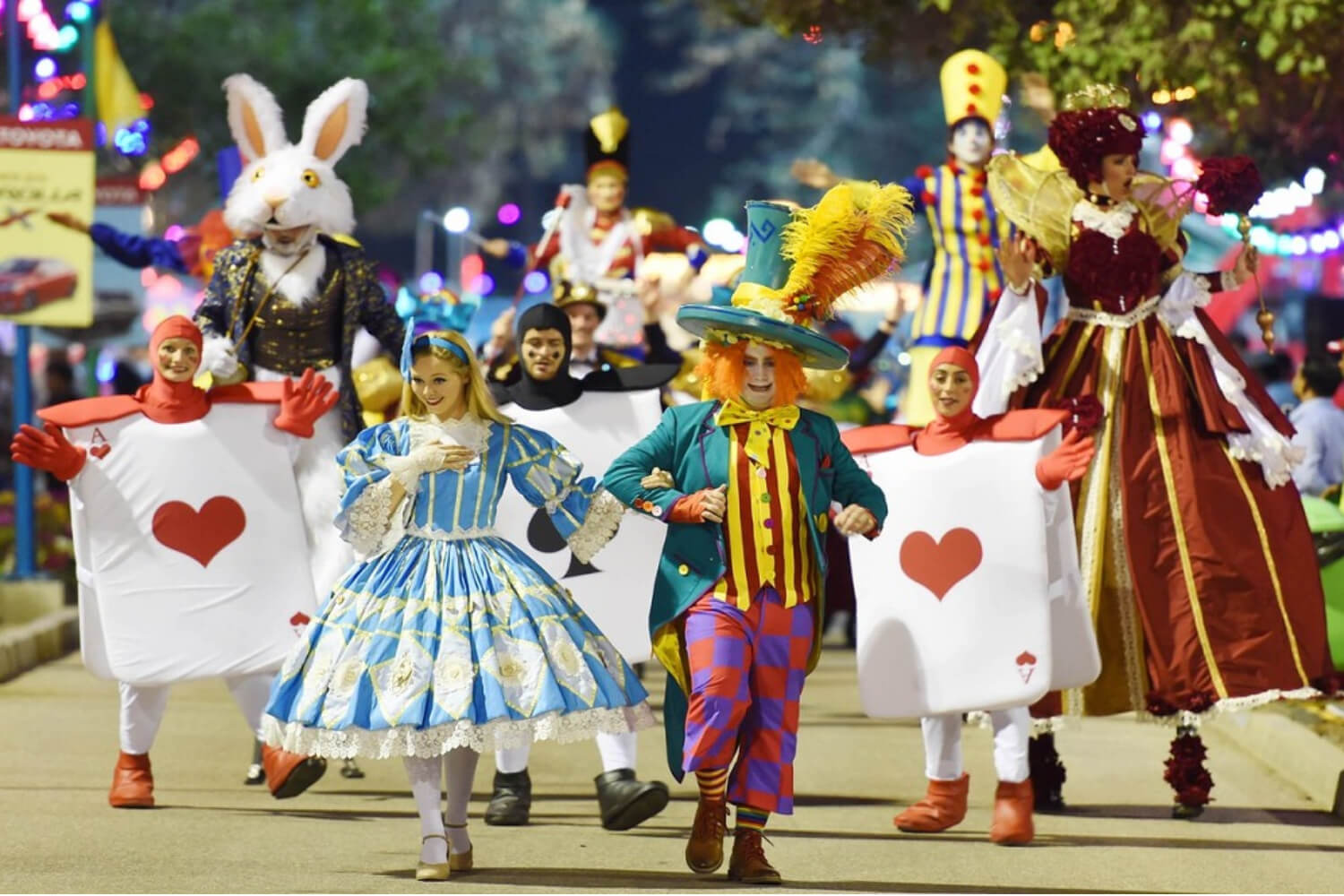
The Muscat Festival stands as one of the most anticipated events on Oman’s cultural calendar. This month-long event is the most renowned annual festival held in the capital city of Muscat since 1998. While the exact dates may vary each year, it is typically celebrated in February. Recognized as a tribute to culture and the arts, the Muscat Festival serves as a vibrant platform where different civilizations converge through multilingual activities. It is also a festival of dazzling colors, attracting people from various nationalities who come together to immerse themselves in the lively and warm atmosphere of the Oman traditions.
Muscat Festival: Date & Location
It is typically held during the cooler months of January and February. The festival usually spans around 10 days, giving ample time for both locals and tourists to explore the extensive program of activities. Daily events often commence in the late morning and continue well into the evening, allowing visitors to enjoy a full day of festivities.
Muscat Festival is hosted at various prime locations throughout the city, making it easily accessible for both residents and visitors.
- Royal Opera House Muscat: A venue that hosts classical music performances and theatrical shows.
- Al Mouj Marina: A picturesque waterfront area where cultural exhibitions and street performances are held.
- Traditional Souqs and Open-air Theaters: Scattered across the city, these venues bring a lively atmosphere where the best of Omani traditions are on display.
Muscat Festival: Highlights & Activities
The Muscat Festival is a feast for the senses, featuring a wide array of activities that celebrate every facet of Omani culture. You can enjoy folk music, traditional Omani dances, vibrant parades that feature traditional costumes and live performances by renowned local artists. These performances are not only entertaining but also provide an insight into the musical heritage of Oman.
Moreover, you can browse through exhibitions showcasing local artisans’ work—from intricate silver jewelry and handwoven textiles to pottery and wood carvings. Taking part in workshops where visitors can learn about traditional Omani crafts such as basket weaving, pottery, and even traditional calligraphy.
Participating in the Oman festival, you have opportunities to savor authentic Omani traditional dishes like shuwa (slow-cooked lamb), majboos (spiced rice with meat), and a variety of fresh seafood options. Food stalls and pop-up cafes offer both traditional flavors and contemporary twists.
Salalah Khareef Festival: Nature’s Grand Festival in Oman
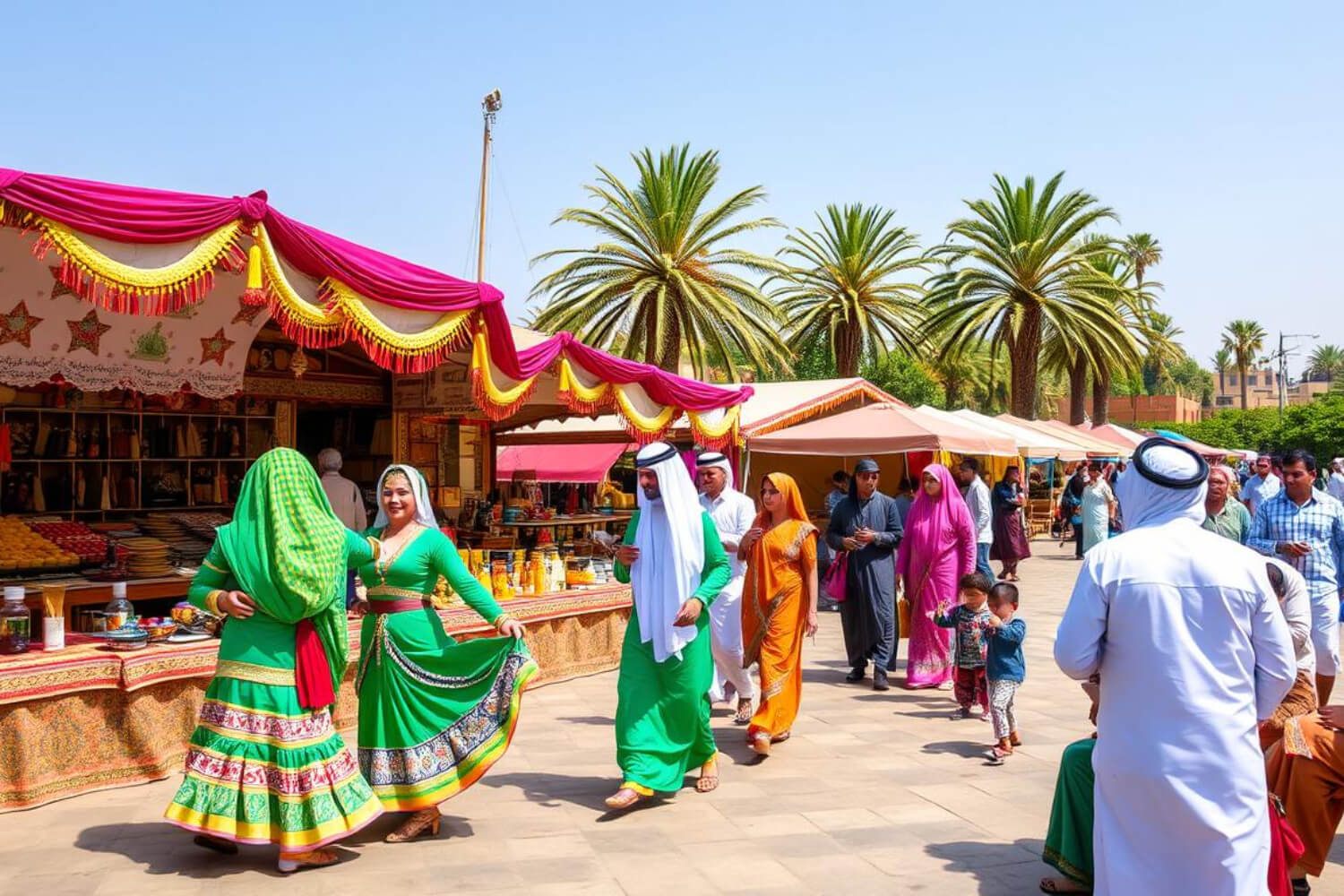
The Salalah Tourism Festival takes place during Oman’s monsoon season, known as the “Khareef.” It is one of the most famous traditional festivals in Oman. During this period, Salalah transforms into a lush, verdant oasis as refreshing rain showers cool the summer heat. The traditional festival features an impressive array of cultural and artistic performances, complemented by international programs that attract visitors from around the world, encapsulates the essence of Oman festivals & events.
The Salalah Festival is vibrant and multifaceted, offering everything from clothing stalls and restaurants to live music, games, theatrical performances, and circus acts. Many families come to enjoy picnics in the delightful monsoon weather, while others are drawn to the shows, games, and fireworks. With each passing year, the famous traditional festival grows in scale and splendor, adding more attractions such as roller coasters, additional musical performances, diverse cultural activities, and a wider range of food options.
Salalah Khareef Festival: Date & Location
The Salalah Khareef Festival is held during the Khareef season, when the normally arid region is blessed with rain and a burst of greenery. This festival typically runs from mid-July through early September, offering a cool retreat from the summer heat experienced in other parts of Oman. In 2025, this festival will be held from 15th July, 2025 to 31st August, 2025. Activities typically kick off in the early morning and can extend into the late evening, accommodating both nature walks and nighttime cultural events.
Salalah, located in the Dhofar region, is known for its unique climate and lush landscapes during the Khareef season. This place where will held Salalah Khareef Festival:
- Al Baleed Archaeological Park: A historical site where cultural exhibitions merge with the natural beauty of the area.
- Salalah Corniche: A scenic waterfront promenade lined with food stalls, art displays, and live music.
- Local Resorts and Gardens: Many events are hosted at resorts where guests can enjoy traditional music and dance in a relaxed, natural setting.
Salalah Khareef Festival: Highlights & Activities
The Salalah Khareef Festival is a vibrant celebration of both nature and culture, offering visitors a rich and immersive experience. Guided nature excursions take travelers through breathtaking landscapes, from cascading waterfalls and lush green valleys to pristine beaches, with opportunities for hiking, bird-watching, and photography.
Traditional Omani music and dance performances bring the cultural heritage of the Dhofar region to life, set against the festival’s picturesque natural backdrop. Visitors can explore bustling art and handicraft fairs, where local artisans showcase unique pottery, textiles, and jewelry. Along the coast, beach activities range from camel rides and water sports to relaxed seaside picnics.
Food lovers will delight in the festival’s culinary offerings, where traditional Omani dishes blend with modern flavors, creating a gastronomic experience that captures the essence of the region.
Nizwa Festival: A Journey into Omani Heritage
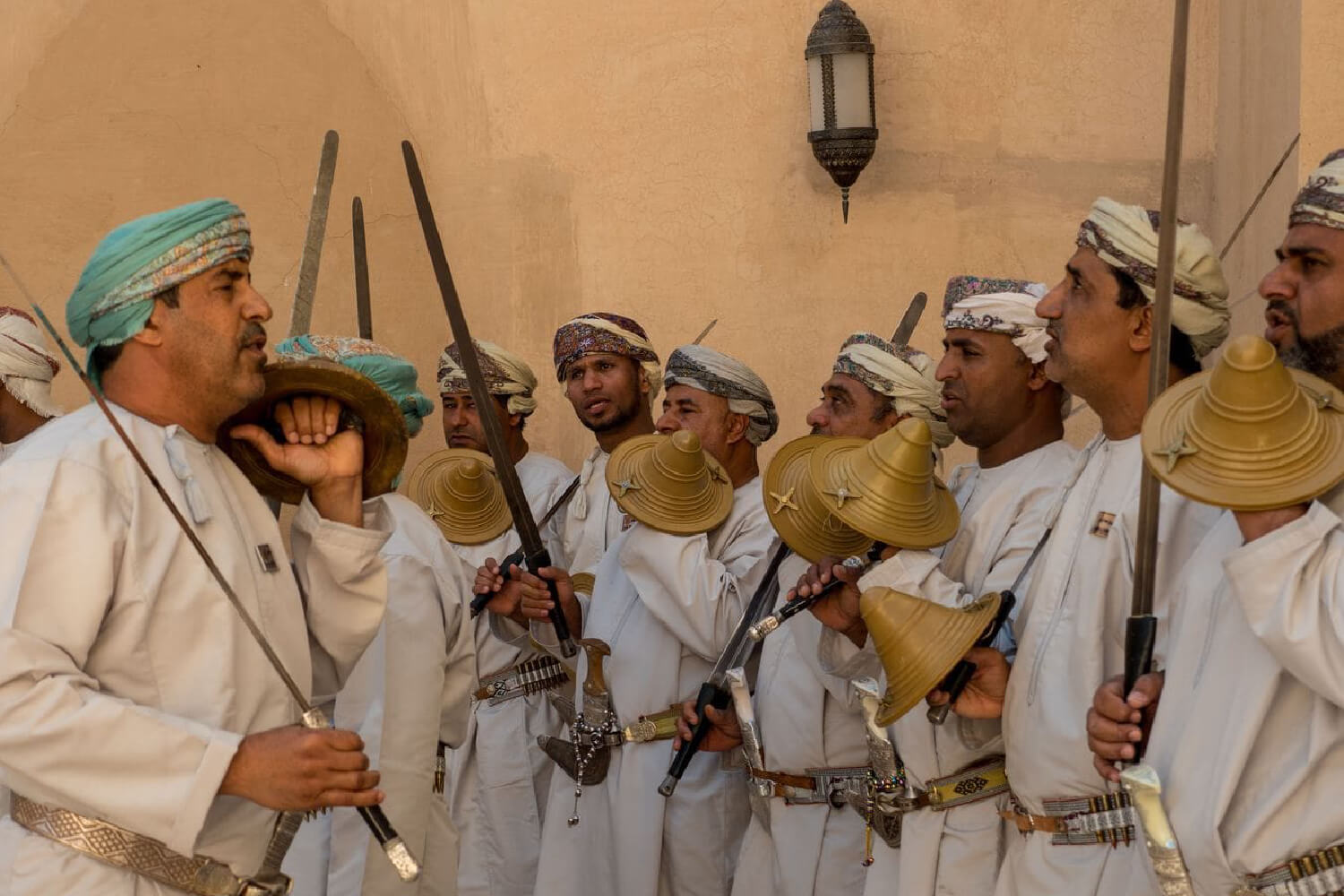
Nizwa, one of Oman’s oldest cities, is synonymous with rich history, traditional craftsmanship, and a deep-rooted cultural identity. The Nizwa Festival is a celebration of this heritage, drawing visitors into a world where ancient traditions meet modern festivities.
Nizwa Festival: Date & Location
This traditional festival is generally scheduled during the cooler winter months, with most editions taking place in December. The festival’s duration spans several days, allowing for an immersive cultural experience that evolves throughout the day.
It is typically held in December (with some events possibly beginning in late November) with full-day experience, including morning markets, mid-day cultural exhibits, and evening performances that extend into the night.
Set against the backdrop of Nizwa’s historical landmarks, the festival makes the most of the city’s rich cultural settings:
- Nizwa Fort: One of Oman’s most iconic historical structures, offering a glimpse into the architectural prowess of ancient Oman.
- Traditional Souqs: Bustling markets where local vendors sell handicrafts, spices, and traditional attire, providing visitors with a true taste of Omani life.
- Public Squares and Open-air Arenas: Spaces that are transformed into stages for performances, exhibitions, and interactive cultural activities.
Nizwa Festival: Highlights & Activities
Explore the Nizwa Fort, a magnificent historical landmark that offers insight into Oman’s rich heritage and architectural brilliance. Stroll through the bustling Nizwa Souq, where you can immerse yourself in local culture while browsing traditional crafts, fragrant spices, and exquisite Omani silver, all while supporting the local community.
Experience the vibrancy of Omani traditions through cultural performances featuring captivating music and dance that bring the nation’s heritage to life. Delight your taste buds by sampling authentic Omani dishes, making food tastings a flavorful way to connect with the region’s culinary traditions.
For a truly immersive experience, take part in hands-on workshops where you can learn traditional crafts such as pottery or weaving, gaining a deeper appreciation for Omani artistry.
Eid Al-Fitr and Eid -Adha in Oman
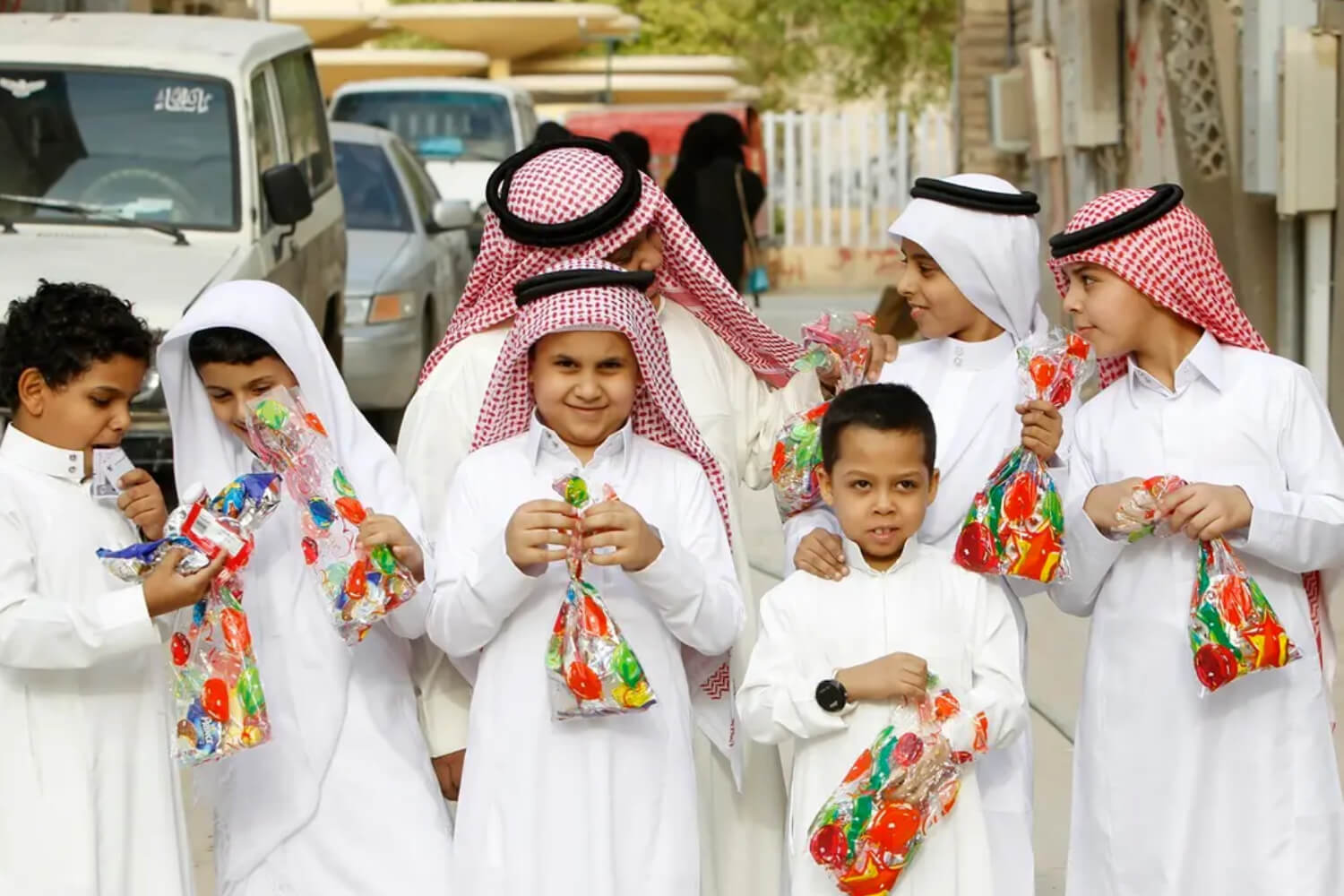
Eid Al-Fitr and Eid Al-Adha are the two most significant religious festivals in Oman, celebrated with great enthusiasm by Muslims across the country. These occasions are not only moments of religious devotion but also opportunities for families and communities to come together, share joy, and extend generosity to those in need.
Eid Al-Fitr marks the end of Ramadan, the holy month of fasting and prayer. It is a time of happiness and togetherness, where families gather, exchange gifts, and offer support to the less fortunate. The day begins with a special prayer at the mosque, followed by lavish feasts featuring traditional Omani dishes such as Shuwa, a slow-cooked lamb dish prepared in an underground sand oven, and Harees, a comforting blend of wheat and meat.
Approximately 70 days later, Eid Al-Adha—also known as the Festival of Sacrifice—is observed to honor the Prophet Ibrahim’s devotion to God when he was willing to sacrifice his son. The festival is marked by the ritual slaughter of livestock, with the meat distributed among family, friends, and those in need. Like Eid Al-Fitr, it is a time of communal prayers, hearty meals, and acts of charity, reinforcing the values of faith, gratitude, and compassion.
Eid Al-Fitr and Eid -Adha: Date & Location
The exact date of Eid Al-Fitr varies each year in accordance with the Islamic lunar calendar. It is observed on the first day of Shawwal, immediately following Ramadan. Eid Al-Adha is observed on the 10th day of Dhu al-Hijjah, the last month of the Islamic calendar. The dates shift each year based on lunar sightings. Festivities typically begin early in the morning with communal prayers and extend throughout the day with family gatherings, feasts, and public celebrations.
Eid Al-Fitr and Eid-Adha are typically held in mosques and open fields to accommodate the faithful. Many towns and cities set up temporary centers where cultural and social activities take place.
Eid Al-Fitr and Eid -Adha: Highlights & Activities
Eid celebrations in Oman are marked by deep-rooted traditions that bring families and communities together in a spirit of generosity and joy. During Eid al-Adha, Muslims typically spend several hours in prayer and listening to sermons at mosques. A key ritual of the festival is the symbolic act of sacrifice, where animals such as sheep, goats, or cattle are offered in obedience and charity. The meat is thoughtfully divided into three portions—one for the family, one for friends and neighbors, and one for those in need—emphasizing the values of sharing and compassion.
The festivities continue with grand feasts featuring an array of traditional Omani dishes, accompanied by social visits, gift-giving, and community outreach programs that strengthen social bonds. Across the country, cultural programs come alive with traditional music, dance, and storytelling, offering a glimpse into Oman’s rich heritage.
To truly experience the essence of Eid in Oman, visit the magnificent Sultan Qaboos Grand Mosque, where the atmosphere is both spiritual and celebratory. Indulge in the flavors of authentic Omani cuisine, from fragrant rice dishes to slow-cooked meats, and take a stroll through Muscat’s bustling markets, where vibrant stalls showcase traditional Omani attire, intricate jewelry, and handcrafted
Oman’s National Day
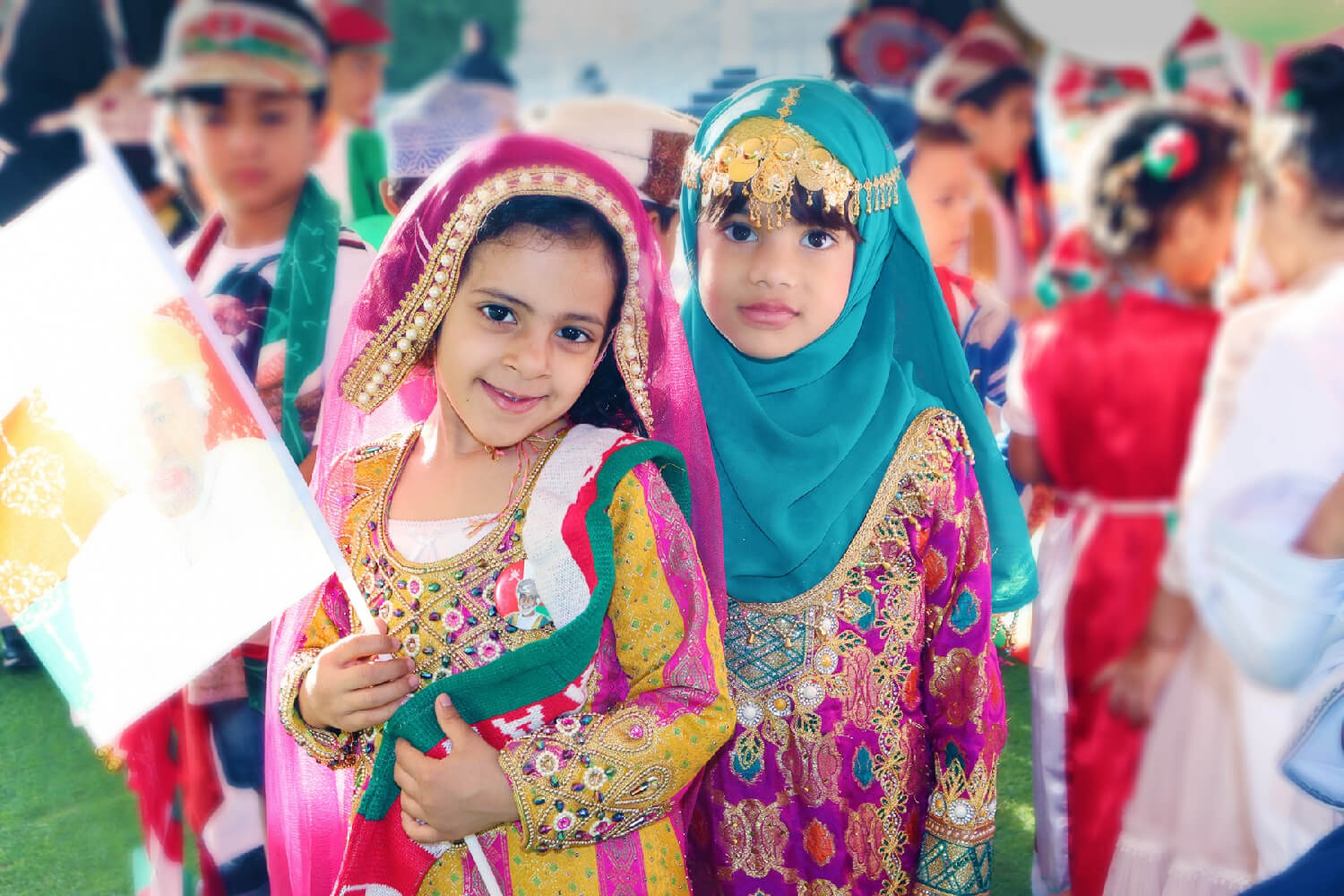
Oman’s National Day, celebrated on November 18th, is an occasion for the entire nation to honor its independence and the visionary leadership of Sultan Qaboos bin Said. The country comes alive with a festive atmosphere, featuring dazzling fireworks, grand military parades, and artistic performances that showcase Oman’s unique cultural heritage. Streets and buildings are beautifully decorated with colorful lights, national flags, and portraits of the Sultan, creating a scene filled with national pride
Oman’s National Day: Date & Location
Oman National Day is celebrated annually on November 18th. The celebrations typically begin in the morning with official ceremonies and continue into the evening, culminating in spectacular fireworks and light displays.
One of the best places to experience this famous Oman festival is in Muscat, where the main events take place. The Royal Opera House often hosts special performances, while numerous public events showcase traditional Omani music, dance, and poetry recitals. This festive occasion is also a great opportunity to explore Muscat’s historic landmarks, such as the Sultan Qaboos Grand Mosque and the Royal Opera House, both of which play a significant role in the celebrations.Across Oman, smaller towns and cities hold their own local festivities, often featuring community parades, cultural shows, and street fairs.
Oman’s National Day: Highlights & Activities
Oman’s National Day is a grand spectacle of patriotism, unity, and cultural pride, marked by a series of vibrant celebrations across the country. The day begins with official ceremonies where government leaders and dignitaries reflect on Oman’s achievements and future aspirations. A major highlight is the impressive military parade, where the nation’s armed forces showcase their discipline and strength through precision drills, marching bands, and tactical demonstrations.
The celebrations extend to cultural performances, with traditional music, dance, and folk art exhibitions that bring Oman’s rich heritage to life. As night falls, the sky is illuminated by breathtaking fireworks and synchronized light shows, symbolizing the country’s progress and bright future. Across cities and towns, communities come together through parades, art exhibitions, and lively street performances, fostering a profound sense of national pride and togetherness.
Muharram Celebration In Oman
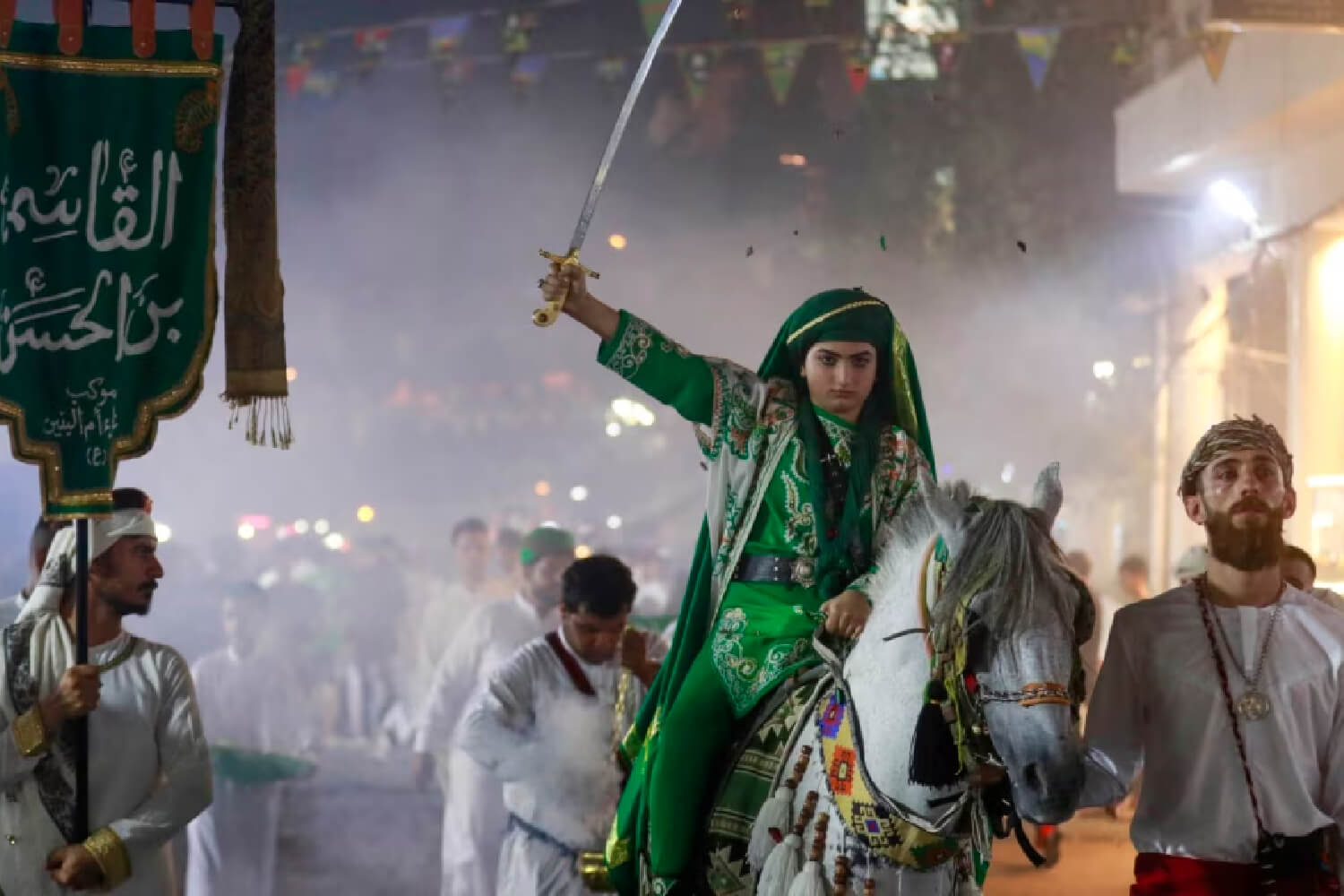
Muharram, the first month of the Islamic lunar calendar, holds deep spiritual significance for many across the Islamic world. In Oman, the observance of Muharram is marked by a series of reflective, solemn, and community-focused events that embody themes of sacrifice, renewal, and collective remembrance. While the nature and scale of the celebrations may vary across regions, Muharram in Oman offers a unique insight into the nation’s rich tapestry of religious and cultural traditions.
Muharram: Date & Location
The month of Muharram begins with the sighting of the new moon, marking the start of the Islamic lunar year. The celebrations extend throughout the month, culminating in the Day of Ashura—the 10th day of Muharram—which is one of the most significant days in the observance.
Muharram observances typically start with the early morning Fajr prayers, setting a tone of reflection for the day. Throughout the day, various sessions—including recitations, sermons, and communal gatherings—are held, often followed by evening programs where reflections and poetry recitations take place in a more intimate setting.
Across Oman, Muharram is observed with deep spiritual reflection and communal gatherings, with key venues playing a significant role in the commemoration. Mosques serve as the heart of worship, where congregations come together for extended prayer sessions and sermons, particularly on the Day of Ashura, as religious leaders recount historical events with great reverence.
In cities like Muscat, Nizwa, and Salalah, community centers and cultural halls host educational seminars, lectures, and panel discussions, offering insights into the historical and spiritual significance of Muharram. These spaces also encourage interactive discussions, allowing individuals to share personal reflections and deepen their understanding of the occasion.
In certain regions, where cultural traditions allow, public spaces and designated processional routes become sites for solemn commemorative processions. These gatherings provide an opportunity for communities to walk together in unity, honoring the spirit of remembrance and reinforcing a shared sense of purpose.
Muharram: Highlights & Activities
Muharram is an opportunity to deepen your understanding of Islamic customs and history. You can attend religious discussions, read about the events of Karbala, or engage in conversations with local scholars and community members to gain insight into the significance of this sacred time.
The events surrounding Muharram, particularly the story of Imam Hussain and the Battle of Karbala, hold great historical and moral significance in Islamic teachings. Learning about these events can provide a deeper appreciation for the values of justice, sacrifice, and standing for what is right.
One of the symbolic elements associated with Muharram in Oman is the lantern, which represents the light of guidance during this solemn month of mourning. It serves as a reminder of faith and the importance of seeking wisdom and righteousness.

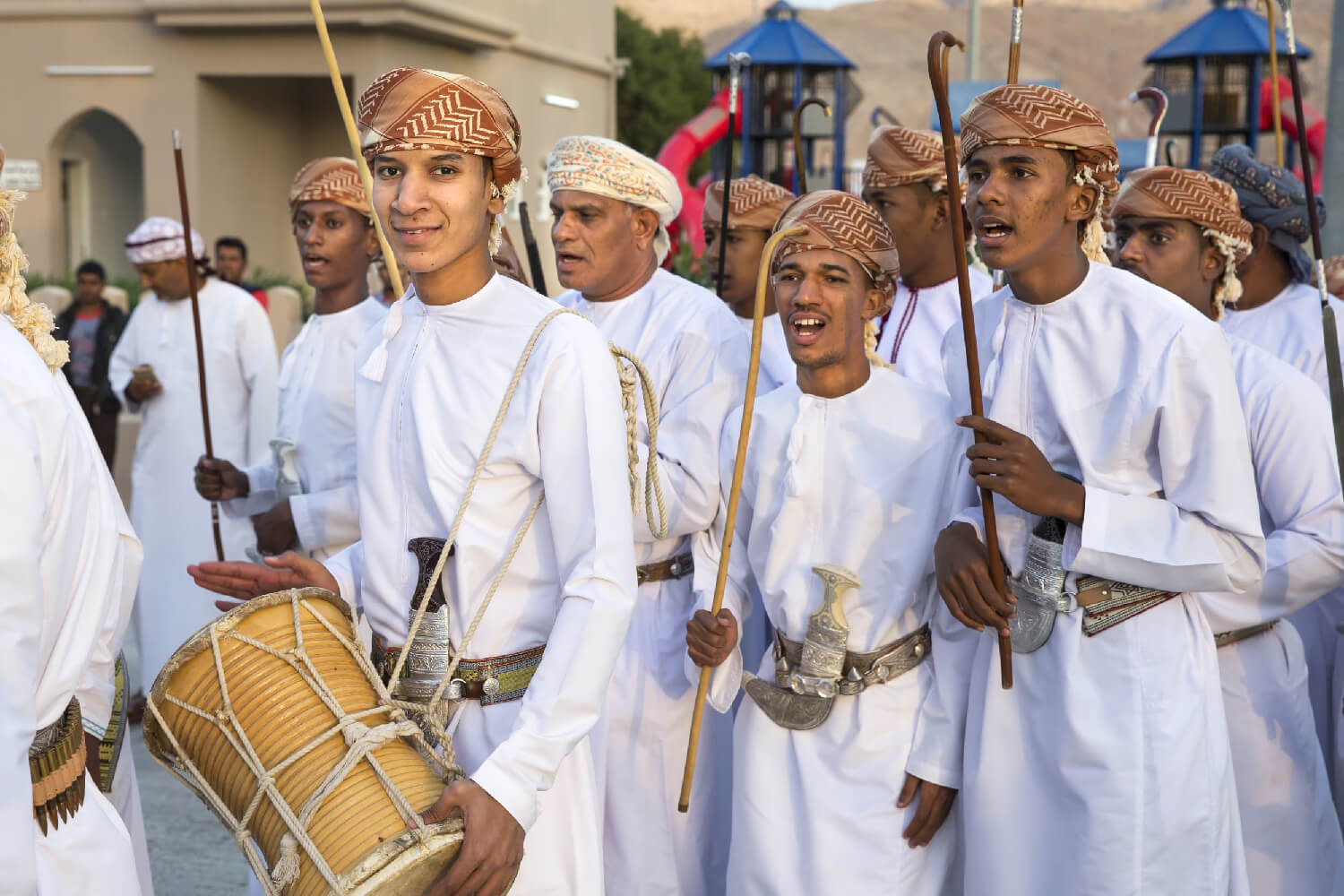
0 Comment